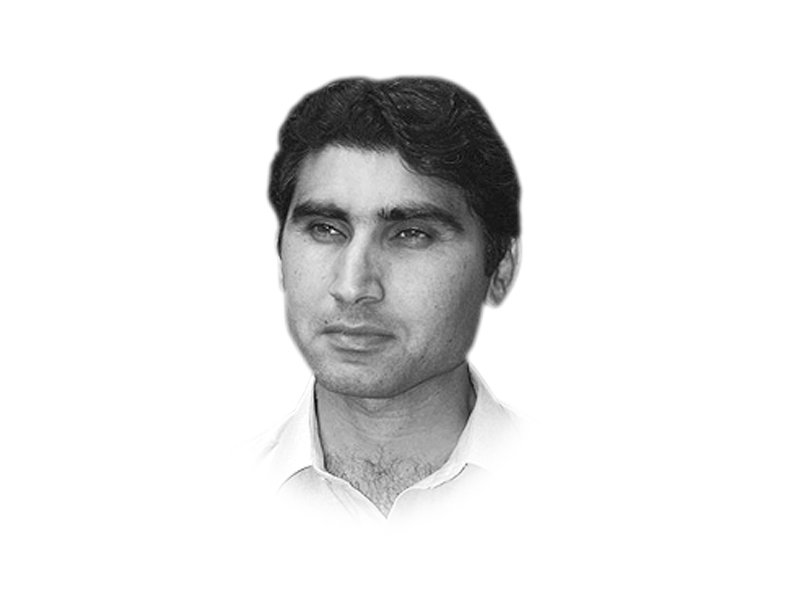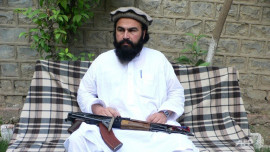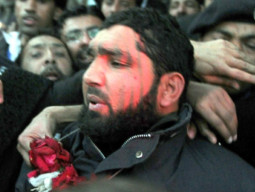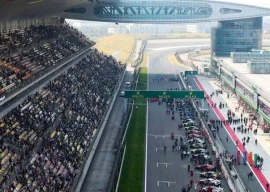
For the last many years, the Pakistani media has followed a trend of glorifying militants’ death by presenting them as heroes. The Tehreek-e-Taliban Pakistan (TTP) deputy chief, Waliur Rehman, is the latest entry on the list. Rehman was killed last month in a drone strike in North Waziristan. The TTP commander was lionised by the media as someone who died a hero’s death after living a militant’s life. Some news cartographers sketched Rehman’s life as a teacher and preacher. Others put together conspiracy theories to paint a softer image of him within the ranks of hardcore militants. The dreaded TTP commander was projected as a pro-Pakistan fighter, who picked confrontation within the TTP ranks for his focus on attacks across the border. This one-sided portrayal apart, Rehman’s death is the end of yet another militant commander. He remained a vital part of the terror enterprise that consumed thousands of innocent lives. In his dozens of video appearances, Rehman never backed off from his commitment to challenge the Pakistani state and society.
Why are different groups of networked gangsters treated as heroes? The political economy of mass communication can be held responsible for popularising this variant of gutter journalism. However, the buck does not stop here. This issue is ideologically structured in Pakistan, which makes it important that we understand it. We have to look further to trace the ideological factors responsible for creating conditions, which help militancy to grow materially. Such conditions provide reason for some to join militancy and allow others to go scot-free after committing violence.
The concept of the security state and its role in the formation of national identity are central to the issue of militancy in Pakistan. Throughout its formative phase, political manoeuvering of the civil-military leadership to evolve itself into a principally structured force has derailed the country. Any opposition from within was associated with the existential threat from outside — India. Its purpose was two-pronged. First, to pave way for a centralised state structure, where the military was the symbol of national unity. And second, to silence opposing social and political forces, making the people believe that dissenting forces are a threat to national solidarity.
Imbued with the spirit of religiosity, a web of mythical events was created to help the establishment continue its power game by relying on retrogressive means. To make this ideology part of the people’s collective consciousness, an abridged history was promoted. The school textbook system, institutional codes, madrassa education and political dogmas of religious parties were all considered vital parts of the history project, which mainly aimed to construct national identity on uncontested mythical lines. Had such measures intended to benefit the country and its people, the outcome would have been different than what it is today.
Instead, this reductionist approach enabled the civil-military establishment to create a paranoiac situation in which, pluralistic social and democratic forces suffered the most. That is why militant forces supportive of the state ideology are always considered an asset. Years of terrorism should have helped civilians differentiate between a criminal and a saviour. However, the lethal binary of the good and the bad Taliban has created widespread confusion. By personifying the saviour and the savage within the same metaphor, this deceptive binary is not letting civilians differentiate enemy from friend and, therefore, much confusion has ensued.
Alarmingly, the state apparatus is also the victim of this confusion, which is evident in the lack of a cohesive approach to deal with the threat of militancy. Some official sections are committed to fight against the Taliban. But others believe that Taliban militants are their undeclared partners to materialise offshore projects. There is no doubt that the Pakistani security forces have rendered great sacrifices in fighting militants. However, these sacrifices have still not led to the dismantling of the channels of militants’ support. Understanding the state’s ideological foundation is important before militancy can be dismantled. Without doing so, merely mobilising military logistics is not going to win us this war.
In the given situation, Pakistanis need to understand the motives behind decades of official investment in creating a false history of the country. The media has a major role to play here, but it can only make a difference if journalists stop playing the role of ideological recruits. The media must challenge the structured nature of militancy. Otherwise, blaming only politicians for not controlling violence is as detrimental to democracy as the media’s own role in glorifying militant commanders.
Published in The Express Tribune, June 28th, 2013.
Like Opinion & Editorial on Facebook, follow @ETOpEd on Twitter to receive all updates on all our daily pieces.
COMMENTS (18)
Comments are moderated and generally will be posted if they are on-topic and not abusive.
For more information, please see our Comments FAQ




















1713264570-0/Tribune-Collage-Feature-Images-(9)1713264570-0-270x192.webp)


























Once a peaceful and safe country, Pakistan has sadly become an intimidating land of disasters. Last week, a terrible blast explosion occurred in Lahore's popular and traditional Food Street in Anarkali that cost 3 precious lives and left several seriously injured. In another incident about a month ago, 8 foreign tourists were shot dead in the northern areas of Pakistan.
The terrifying terrorism stream in Pakistan can be attributed to certain reasons. These include explosive population growth, poverty, unemployment, Islamic religious schools, and a lack of vocational training institutes in the country.
For more, please read: http://sarahrehan23.blogspot.com/2013/07/causes-of-terrorism-in-pakistan.html
Good points raised.
I have tried to delineate the causes of terrorism in Pakistan in my article: http://sarahrehan23.blogspot.com/2013/07/causes-of-terrorism-in-pakistan.html
This is one heck of a lucid and accurate commentary on the situation and its roots - glad I came across it, and my thanks to the author.
very true that US its self going to start dialogue with Taliban but when Pakistan wants to starts dialogue the then US shows their concerns over it like (shjara-e-mamnoa) forbidden tree.
@US CENTCOM: They reject what TTP does as terrorism while considering Afghan Taliban as mujahidins and nor do they reject those people who commit terror against 'kafir Indians' as terrorism. You can ccheck out what kind of hide donations were received by JeM and JuD despite being banned.
When you express your personal opinion, please do not use the IS centcom moniker. I have noticed even comments on India Pakistan cricket related news items having comments by US centcom, that does not make sense.
very true synopsis, can the author tell this to Imran Khan and Nawaz Shareef.
One man's hero is another man's terrorist. I am saddened how loosely the accusation of being a 'terrorist' is thrown at everyone these days. All great heroes were terrorists to oppressors of men and to rebels against God.
I strongly agree with the candid opinion and a very crystal analysis by the writer. He has very aplty pointed the shameful role our media is playing.
Not oblivious of its positive aspects, I have no doubt in my mind that the militancy we'r facing right now owes much to the irresponsible behavior of this so-called free media. I wish someone to reign the horse before it is too late!
The fact is that recent polls clearly indicate that Pakistanis overwhelmingly have rejected terrorism and they view it as the biggest threat to the nation. With their blatant and relentless attacks and then by boldly claiming responsibilities, the terrorists validate the poll results. Killers of innocent can never be heroes. A hero is the Judge who fearlessly and honestly passes judgments against these terrorists and then gets injured in an attack by these criminals. A hero is the SHO who loses his life in a suicide attack while protecting innocent citizens. Heroes are tourists who come to Pakistan for their passion of climbing the most difficult mountains and get murdered in cold blood by these cowards.
Pakistan has many heroes, but rest assured, these coward criminals who kill without remorse are not among them. They have proven over and over again that they are nothing but the enemy of peace loving Pakistanis and their country. Together we will overcome these enemies so real heroes can take over and the region can progress in peace and prosperity.
Abdul Quddus DET-United States Central Command
@madaan.... Bhai are u pakistan's mama.. India has a million more problems than pakistan, so stop your harangues and try not poke ur nose in every article which pertains to terrorism in pakistan
portraying zero,s as hero,s.
Mullah Omar is still a hero. So are Haqqani and Hekmatyar. No matter how many or how they kill Afghans. Will someone please call out the hypocrisy?
It is imposible to ignor the involvement of foreign hands but this also shows incompetence, immaturity and powers in wrong hands. otherwise powerfull people would bring to front page. In last I want to aks Mr Syed Irfan Ashraf the trem "The political economy of mass communication" he used in his aricle.
Kudos to the author... Hopefully your attempt to educate the Pakistani people succeeds.. Best of luck from India...
Brilliant.
The problem of Pakistan is Pakistan itself and its people, its incompetency, lack of visionary thinking, lack of critical and analytical approach, and non-competent and corruption system. Although it’s 99% problems and self-created issues can be solve in days. Basically Pakistan needs professional, visionary and competent people, thinkers and honest leadership which is unfortunately, has not been available soon after its creation. Until and unless the Pakistan doesn’t change its attitude then situation will get worst and worst. There is no involvement of the foreign hands that what is going on in Pakistan but it’s all because of its incompetence, immaturity and powers in wrong hands.